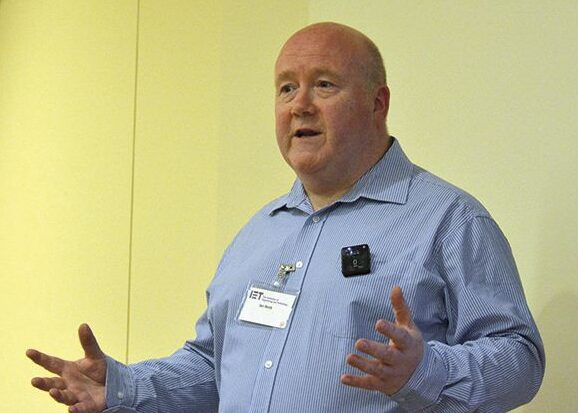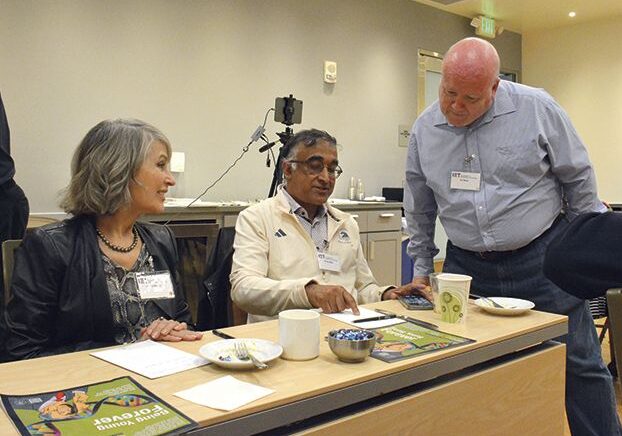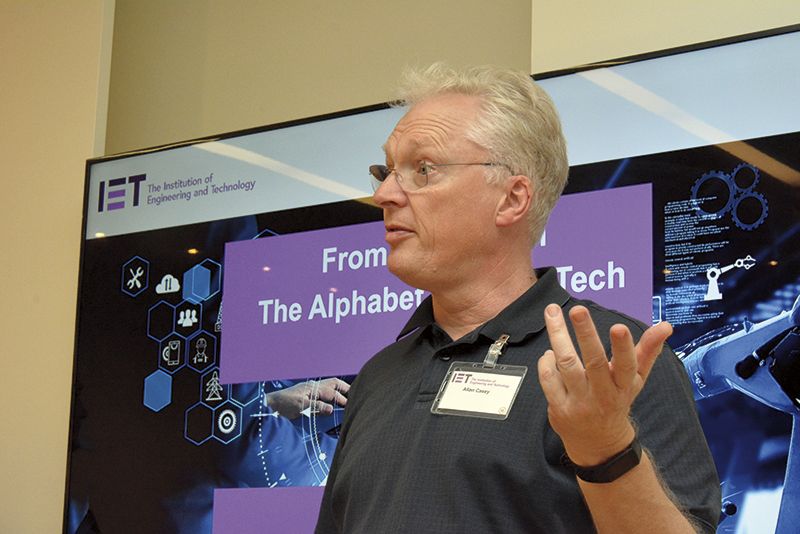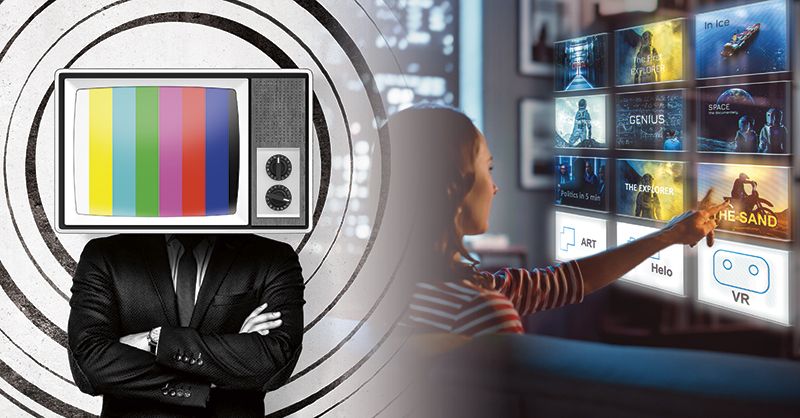TVs and the Media Buffet: OLED, QLED, 4K, 8K
Going through LinkedIn, I saw an invite to register for a talk titled “From AI to Zoom, deciphering the Alphabet Soup of Media Technology.” With Dr. Ronjon Nag sharing this event, I figured it would be interesting to attend and see what the black box of “Media Technology” holds. From TV screens to content delivery to mass video communication, speaker Ian Nock went all over the map with technology we take for granted. Vansh Gupta presents a simplified definition of the mysterious field of “Media Technology.”
In a recent talk hosted by the Institute of Engineering and Technology (IET), Media Technology expert Ian Nock describes the evolution of different technologies that are driving the digital media landscape. He deciphers the role of AI, the technology behind our TV screens, and the future of broadcasting. Nock also shared the impact of prosumers in the digital media farm. Being constantly barraged with AI talks, the conversation on ‘MediaTech’ was a spot of fresh air.

I concede. The talk did begin with AI, but only briefly. We know that Generative AI can be used to create visuals of cats wearing sunglasses at this point, but AI is more than that. AI can, and is being used in MediaTech as well. OpenAI’s Sora can generate videos with proper prompting. Sound effects and music can be created using AI. On a more technical front, AI will be beneficial for metadata generation and classification. Think about captions on a Zoom meeting or YouTube’s generated captions. It is all the power of deep learning.
Experiencing these AI technologies at play, we tend to sideline the foundation on which these things are possible. The conversation on MediaTech reminded us that the foundation of delivering/broadcasting content has gone through an evolution. As a result, we have also evolved. We consume and communicate at the speed of a Bugatti with the smoothness of a Rolls Royce.
Let’s reflect for a second. When was the last time you thought twice before streaming a movie on Netflix? The last time you considered internet speed when broadcasting on Instagram Live? Or how about when you last worried your video would pause or go blurry while streaming it on your personal device? These were the consumers’, or should I say prosumers’, worries just a decade and a half ago.

Ian Nock explains that these worries have been eliminated due to underlying technologies we tend to take for granted. Due to new developments in Codecs, the introduction of Adaptive Bit Rates, new encodings, and changes to broadcasting technology, we can now produce and stream 8K video content and get the widest spectrum of colors on screens beyond our visual capabilities. Riveting? After charting the past, Ian Nock dove into what he believes is the path forward.
V. Tech – Not the Honda Civic engines, Video Tech. We touched on the brewing scene when salivating at CES 2024. Tech junkies at our finest. From CRTs to LCDs, to now what we see today – LEDs. Nock says that OLED TVs are still the most sustainable form of TVs with the best display of colors. Essentially, it is the gold standard of screens. Samsung markets its ‘QLED’ TVs as groundbreaking, but they are closer to LCD-panel TVs than OLEDs. Here is a pro tip for our environmentally conscious – close your curtains to save some energy and enjoy the picture.
Having the right screen is one thing. Being able to produce content for that screen is equally vital. Today, one can “literally run a TV company from [their] bedroom,” says Ian Nock. Vodcasts, independent filmmakers, and YouTube content creators can produce 8K UHD content from their bedrooms within hours – potentially minutes with the rise of AI. Couple this with record-breaking internet speeds.
Recent research published by the IET showcases that the fastest recorded internet speed was 301 terabits per second, using a standard fiber optical. That is the equivalent of loading 9,000 HD films. To put this into perspective, the fastest speeds available for home WiFi are at 8 gigabits per second. No wonder content streaming is overtaking broadcasts and an eruption of content creators is fueling TikTok, Instagram, YouTube…

The rise of fast-speed broadband connections and optimized video delivery has also been a boon for worldwide communication. The transition to remote work and a more connected world can be credited to the rise of Zoom. Yes, we had Skype and Webex, but Zoom became the gold standard. Even today, many large-scale virtual conferences rely on Zoom over Google Meets or Microsoft Teams. Ian Nock points out only one reason Zoom took off: cost and features. OK, maybe two reasons if we’re being that pedantic. Even with Skype and Webex being in the industry longer, Zoom captured the market faster and continuously improved its products for various organizational use cases. The infrastructure – optimized A/V delivery, efficient use of network connections, and user interface – fueled Zoom’s growth. Notice a pattern?
The winning formula for innovation is optimization. The future of MediaTech and its sustainability rely on it. How can we use fewer resources while delivering more? Media Engineering is often overlooked as an area of innovation and growth because we are so ‘awestruck’ by AI and automation. A deep dive into MediaTech reveals that many of Silicon Valley’s current innovations have been driven by it. Of course, we can talk about IP-based TV delivery and ATSC 3.0 vs. US FAST services. However, that is a conversation for another day for our non-European readers.


